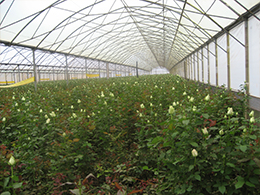
Greenhouses are sanctuaries for plants, providing the perfect environment for growth and productivity. However, greenhouse repairs, if not handled properly, can turn this sanctuary into a breeding ground for pathogens and pests. Mistakes made during repairs can lead to contamination and damage, endangering the health of your plants.
1. Poor Planning and Preparation
A. Ignoring Timing
- Mistake: Conducting repairs during peak growing periods or adverse weather conditions.
- Impact: Increases the risk of pathogen spread and stress to plants.
- Solution: Schedule repairs during low activity periods or when plants are less vulnerable, such as after harvesting or during dormant periods. Avoid wet and humid weather to reduce the risk of pathogen spread.
B. Lack of Materials and Tools
- Mistake: Starting repairs without ensuring all necessary tools and materials are available.
- Impact: Leads to delays, extended repair times, and potential contamination.
- Solution: Conduct an inventory check and gather all required tools and materials before beginning repairs to minimize downtime and reduce the risk of contamination.
2. Inadequate Cleaning and Disinfecting of Tools
A. Skipping Initial Cleaning
- Mistake: Using tools covered in soil, plant residues, and debris.
- Impact: Introduces pathogens and pests to the greenhouse environment.
- Solution: Thoroughly clean tools with soap and water to remove visible dirt before disinfection.
B. Insufficient Disinfection
- Mistake: Not using effective disinfectants or not allowing adequate contact time.
- Impact: Fails to eliminate pathogens, leading to potential contamination.
- Solution: Use a 70% isopropyl alcohol solution, diluted bleach (1 part bleach to 9 parts water), or a commercial disinfectant. Soak tools for at least 10 minutes and rinse with clean water to remove any disinfectant residue.
3. Neglecting Personal Hygiene and Protective Gear
A. Wearing Dirty Clothing and Gear
- Mistake: Entering the greenhouse with dirty clothes or without protective gear.
- Impact: Increases the risk of introducing contaminants.
- Solution: Wear clean, protective clothing such as lab coats or overalls, and use disposable or disinfected gloves. Change gloves frequently if they become dirty or torn to maintain a sanitary environment.
B. Poor Hand and Foot Hygiene
- Mistake: Not washing hands or disinfecting footwear before entering the greenhouse.
- Impact: Transfers pathogens and pests into the greenhouse.
- Solution: Wash hands thoroughly with soap and water, and disinfect footwear or use shoe covers to prevent contamination from outside sources.
4. Uncontrolled Access and Work Area Management
A. Allowing Unrestricted Entry
- Mistake: Letting unauthorized personnel enter the greenhouse during repairs.
- Impact: Increases the risk of contamination and disruption.
- Solution: Restrict access to essential personnel only and implement visitor protocols, including the use of protective clothing and footbaths.
B. Failing to Isolate Work Areas
- Mistake: Not setting up containment zones, leading to the spread of dust and debris.
- Impact: Contaminates plant-growing areas and disrupts plant health.
- Solution: Use plastic sheeting or temporary barriers to isolate repair areas from plant-growing zones, preventing the spread of contaminants.
5. Improper Waste Management
A. Leaving Debris Inside
- Mistake: Allowing repair debris, old plant material, and other waste to accumulate in the greenhouse.
- Impact: Creates a breeding ground for pathogens and pests.
- Solution: Immediately remove all waste from the greenhouse and dispose of it in sealed bags or containers to prevent the spread of pathogens.
B. Neglecting Post-Repair Cleanup
- Mistake: Failing to clean and disinfect the work area and tools after repairs.
- Impact: Leaves residual contaminants that can harm plants.
- Solution: Conduct a thorough cleanup of the work area and re-clean and disinfect all tools and equipment used during repairs before storage.
6. Lack of Monitoring and Follow-Up
A. Skipping Inspections
- Mistake: Not monitoring the greenhouse for signs of contamination or disease after repairs.
- Impact: Allows issues to go unnoticed and escalate, harming plants.
- Solution: Regularly inspect the greenhouse for any signs of contamination or disease and address issues promptly to maintain plant health.
B. Failing to Update Practices
- Mistake: Not reviewing and updating sanitation practices based on observations and new information.
- Impact: Leads to outdated practices that may not effectively prevent contamination.
- Solution: Continuously improve sanitation practices and provide ongoing training for staff on the latest techniques to ensure the greenhouse remains a healthy environment for plants.
Consistent attention to these practices will lead to healthier plants and better yields, safeguarding your investment and efforts. Implementing these solutions will help you maintain a thriving greenhouse, free from the threats of pathogens and pests, ensuring the continued growth and productivity of your plants.
